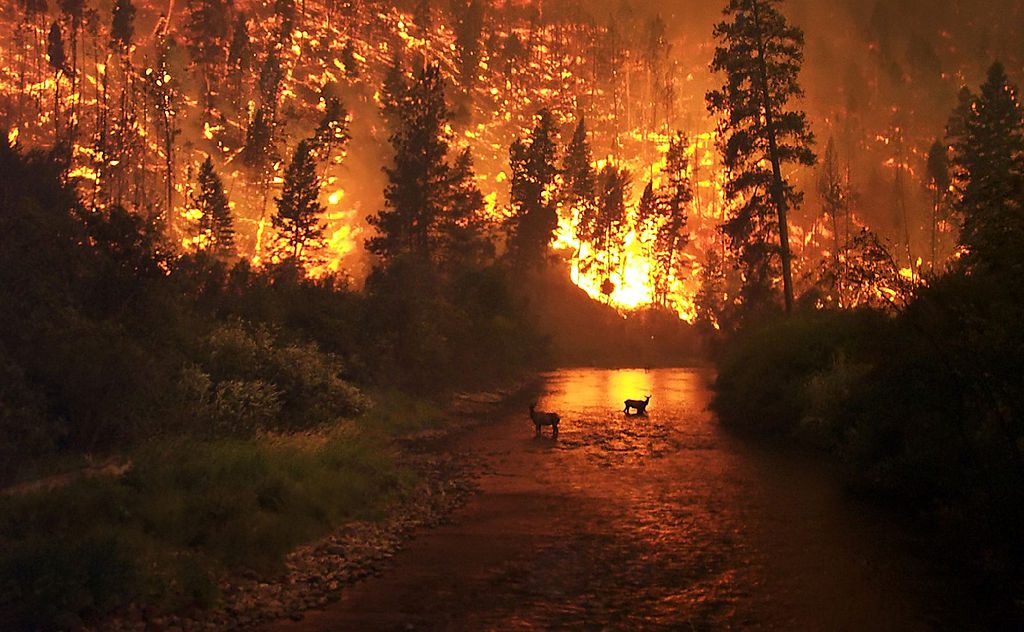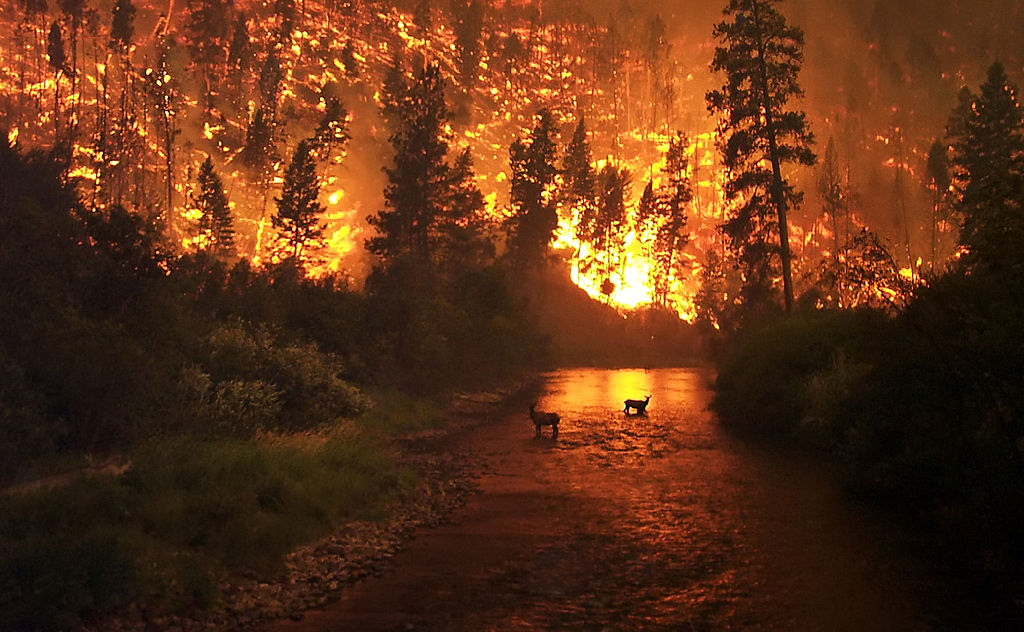Earth, Wind & Fire: Reporting on Natural Disasters

Two elk look on as a wildfire rages in Montana’s Bitterroot National Forest in 2000. Photo: U.S. Department of Agriculture/Wikimedia Commons
Despite flames, rains and the rolling waves of a shaking Earth, a journalist must report the news.
Natural disasters like wildfires, hurricanes and earthquakes are among the most challenging topics a journalist will cover. Such field reporting is physically, mentally and emotionally draining—not to mention hazardous. In a 29 October plenary session at the World Conference of Science Journalists 2017, a panel of journalists described helpful tips to navigate these compelling stories.
Preparedness is Key
Journalists should become familiar with the geographical areas they cover. A writer living in a region riddled with seismic activity should study the processes that cause earthquakes and the specific faults that might rupture. Hurricanes, predicted days in advance, give time for a good reporter to research relevant angles—and to interview scientists and safety officials—before the storm makes landfall.
“As science writers, we need to know what the important scientific questions related to that natural disaster are before they happen,” said Erik Vance, a freelance journalist based in Mexico City. Vance also recommended compiling a list of potential academic experts and public sources to contact should that eruption, flood or fire occur—and to update it frequently.
Reaching out to contacts in foreign countries ahead of time can smooth the reporting process, said Mexico City–based television reporter Guillermo Lopez Portillo, who reports for Televisa News. Local activists and journalists have contacts in the area and can provide valuable information about which places are accessible and safe to report from.
Go to Where the Sky is the Darkest
Covering a natural disaster can be disorienting. “The thing I’ve learned covering wildfires is to go where the sky is darkest,” said reporter Lesley McClurg of KQED in San Francisco. “And bring your press pass.”
Knowing where to find the strongest stories can be half the battle. Eva Ruth Moravec, a freelancer based in Austin, Texas, recommended looking beyond press conferences to seek stories in unexpected places. For instance, the daily situation reports put out by prevention and recovery agencies are rich with possible leads.
An "eerie void of information"
Several panelists recommended taking advantage of social media, a vital pathway for information. Because the electricity was out and cell phone service was rarely available after Hurricane Maria struck Puerto Rico in September, science writer Brian Resnick noticed an “eerie void of information,” where we typically would have seen first-hand coverage on Instagram or Twitter.
“I really wonder how that impacted the coverage we saw and how we thought about it,” said Resnick, who reports for Vox. Mining social media is “invaluable” to provide the perspectives of the people most affected by disasters, he said.
All panelists have used social media to find novel stories. Vance spoke about several instances on social media where people described being robbed by criminals who had dressed up as government officials to check on the house. And McClurg recounted a lead she found about a group of natural healers who set up massage and acupuncture stations for first responders battling the fierce October fires in California’s wine country.
When the Dust Settles
It’s important to know how to move forward when rains dissipate and fires are extinguished. Crisis reporting can take an emotional toll—especially if the event is local.
The takeaway is simple: “Be a human being.”
Taking time to debrief and decompress is critical, the speakers said. Journalists can take advantage of organizations like the Dart Center for Journalism and Trauma, which provides resources to reporters who cover traumatic stories.
The takeaway, according to Vance, is simple: “Be a human being.” No publication, story or photograph is worth the cost of a life. If the opportunity arises to help someone, he urged, take it.
—
Jennifer Leman is a graduate student in the Science Communication Program at UC Santa Cruz. She has an undergraduate degree in geosciences and a passion for communicating the wonders and hazards of the natural world. Follow her on Twitter @jlorileman.

